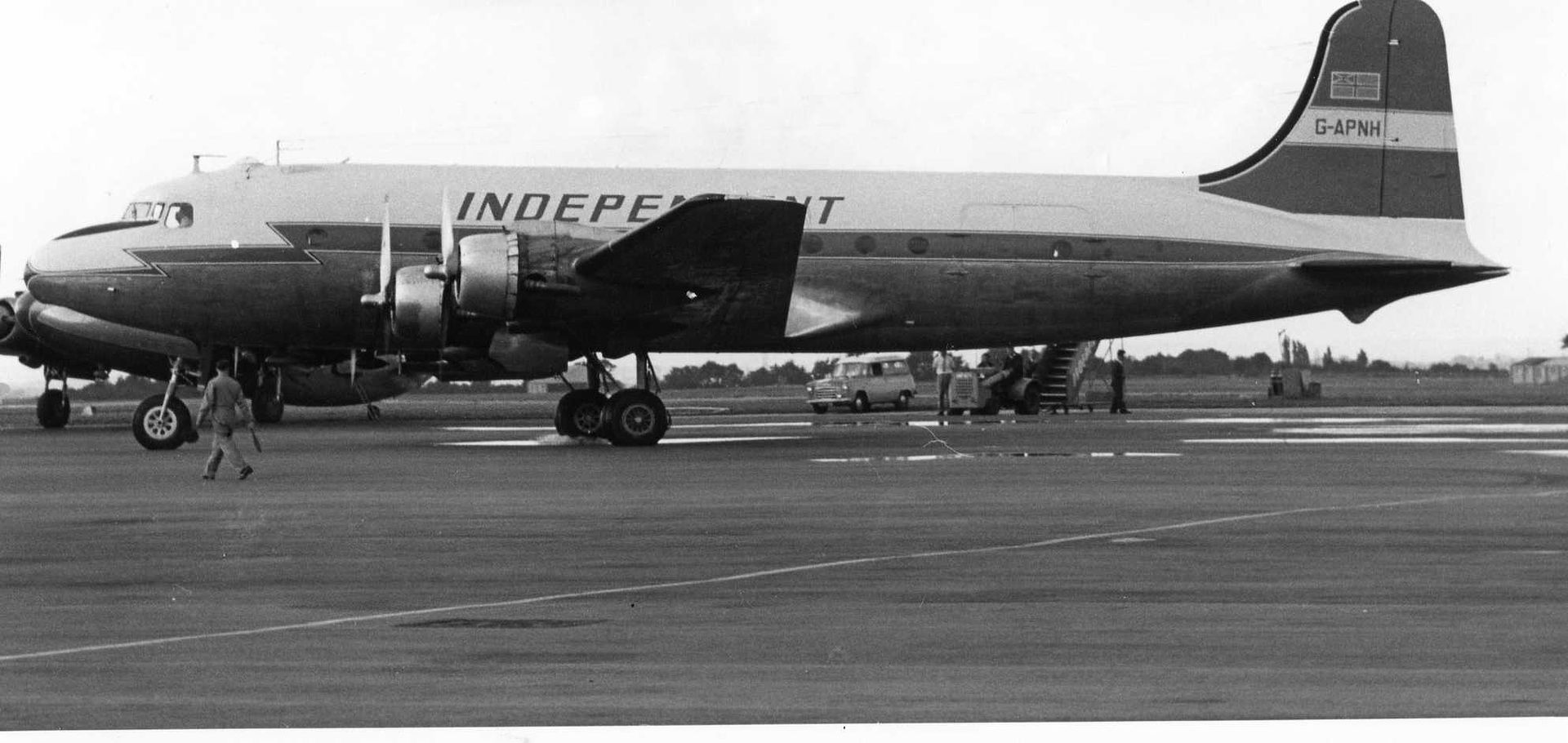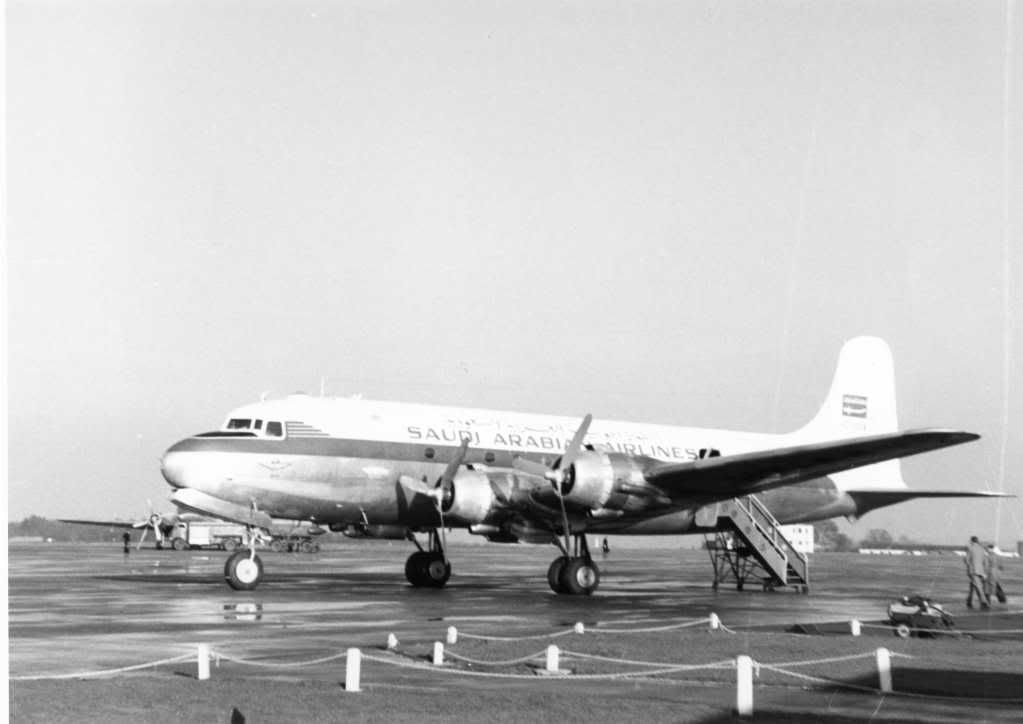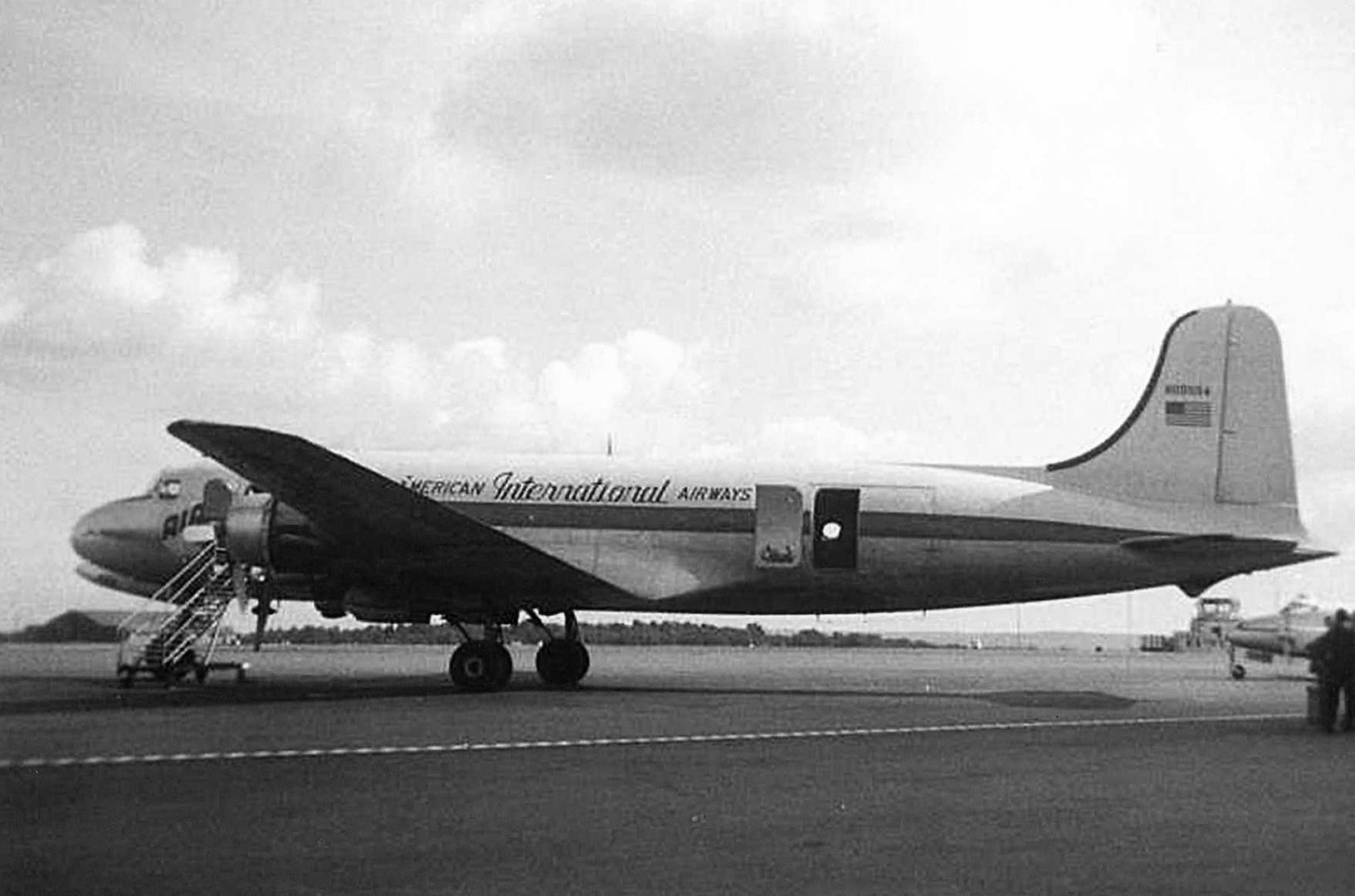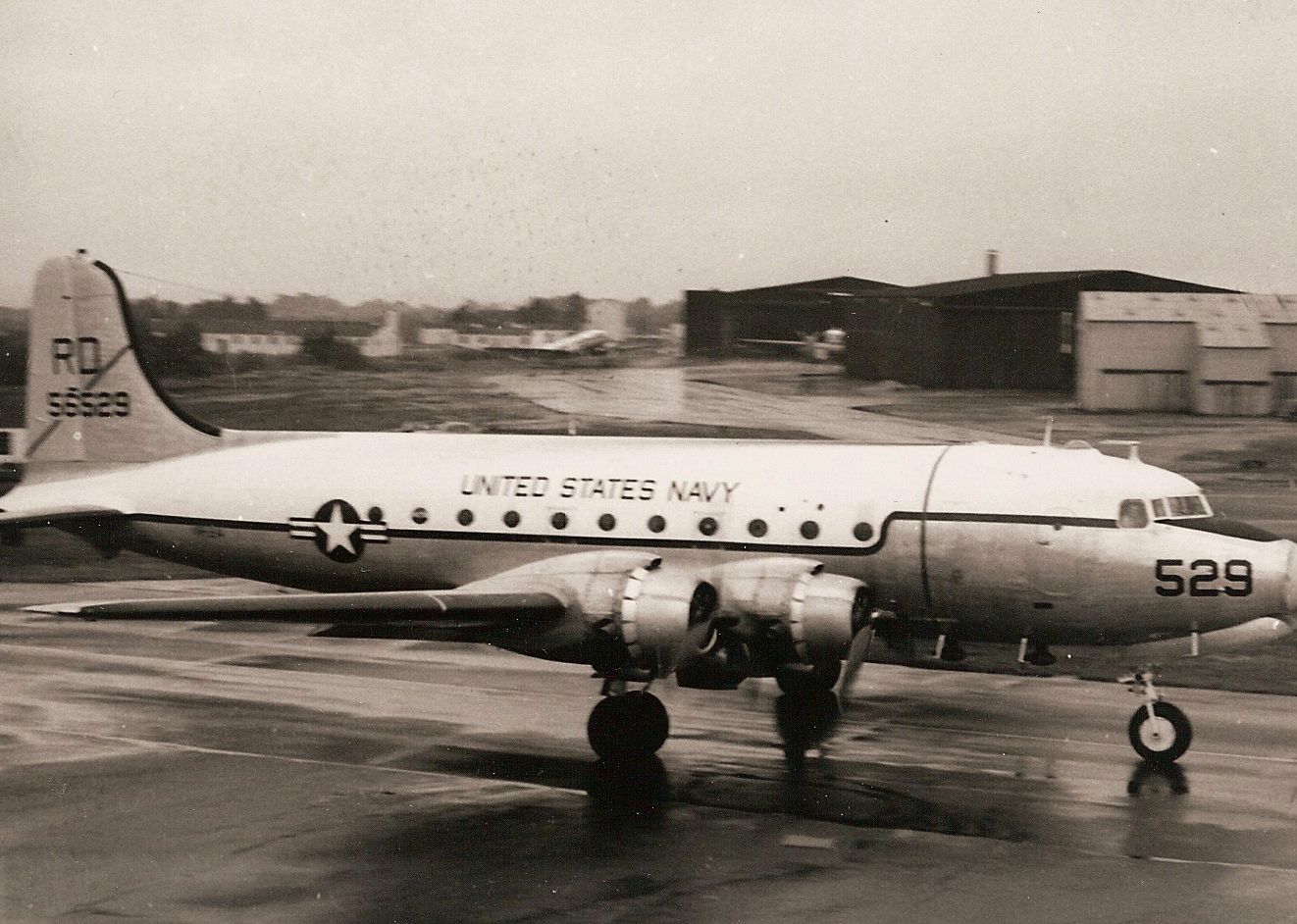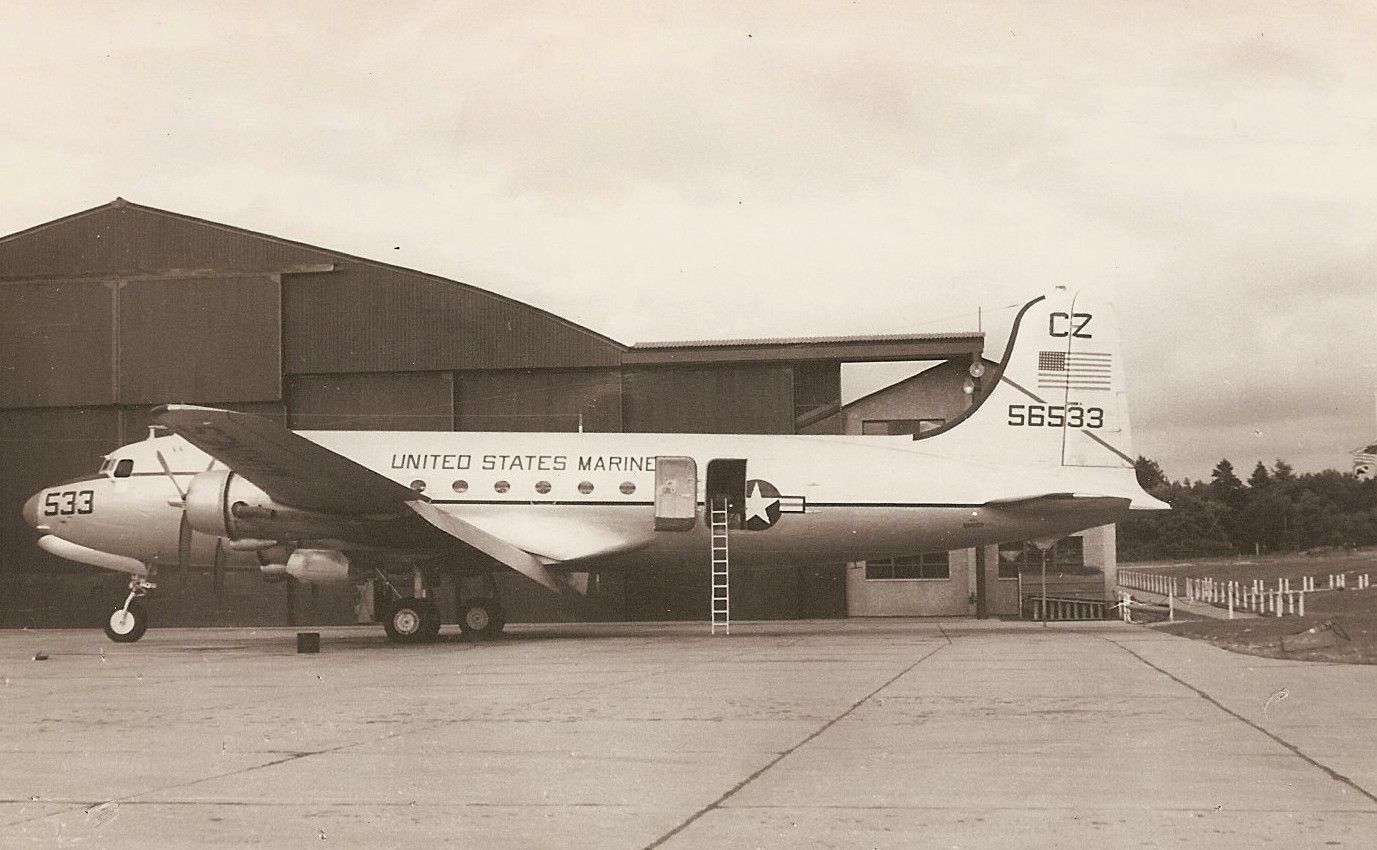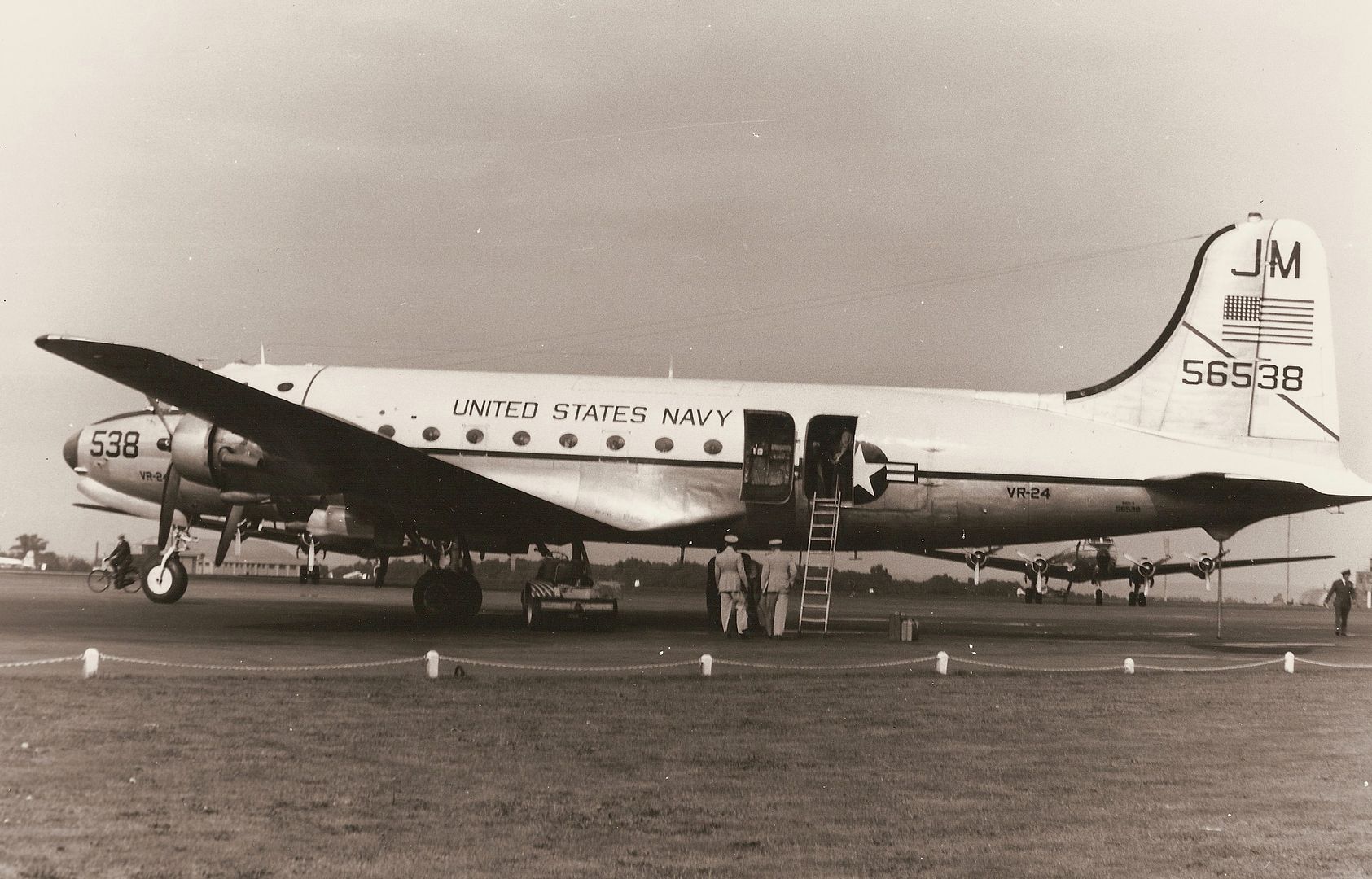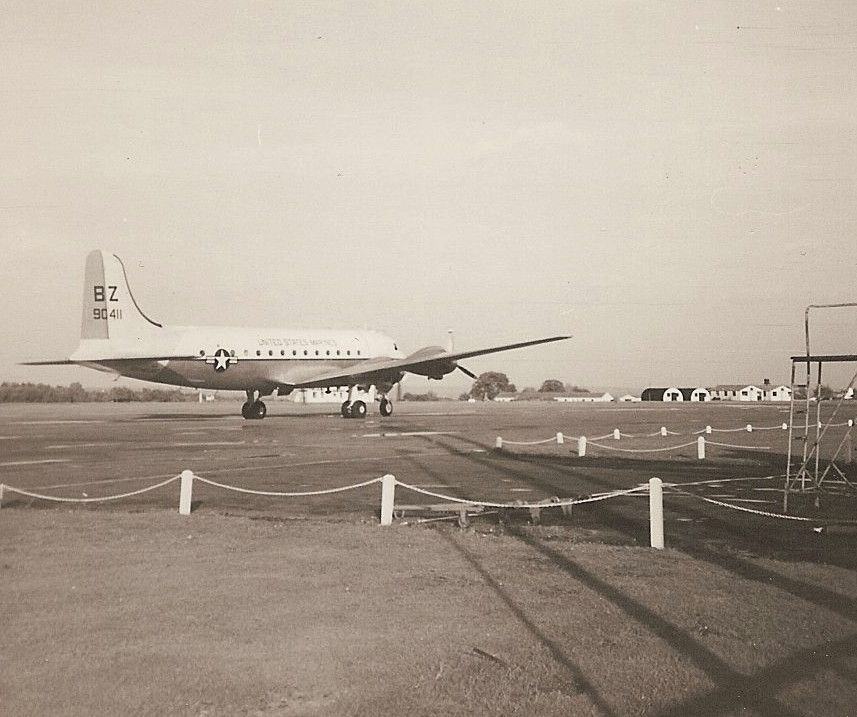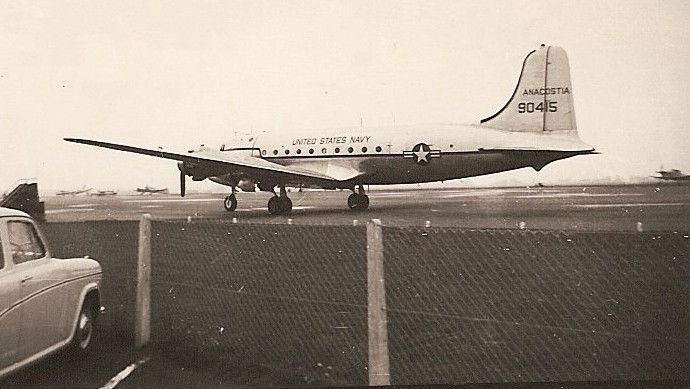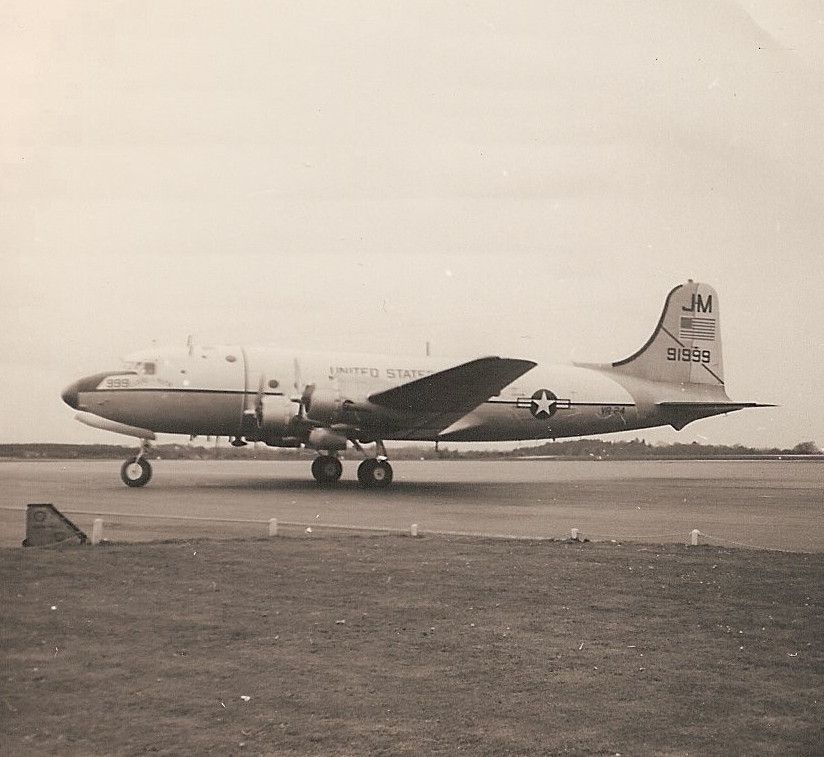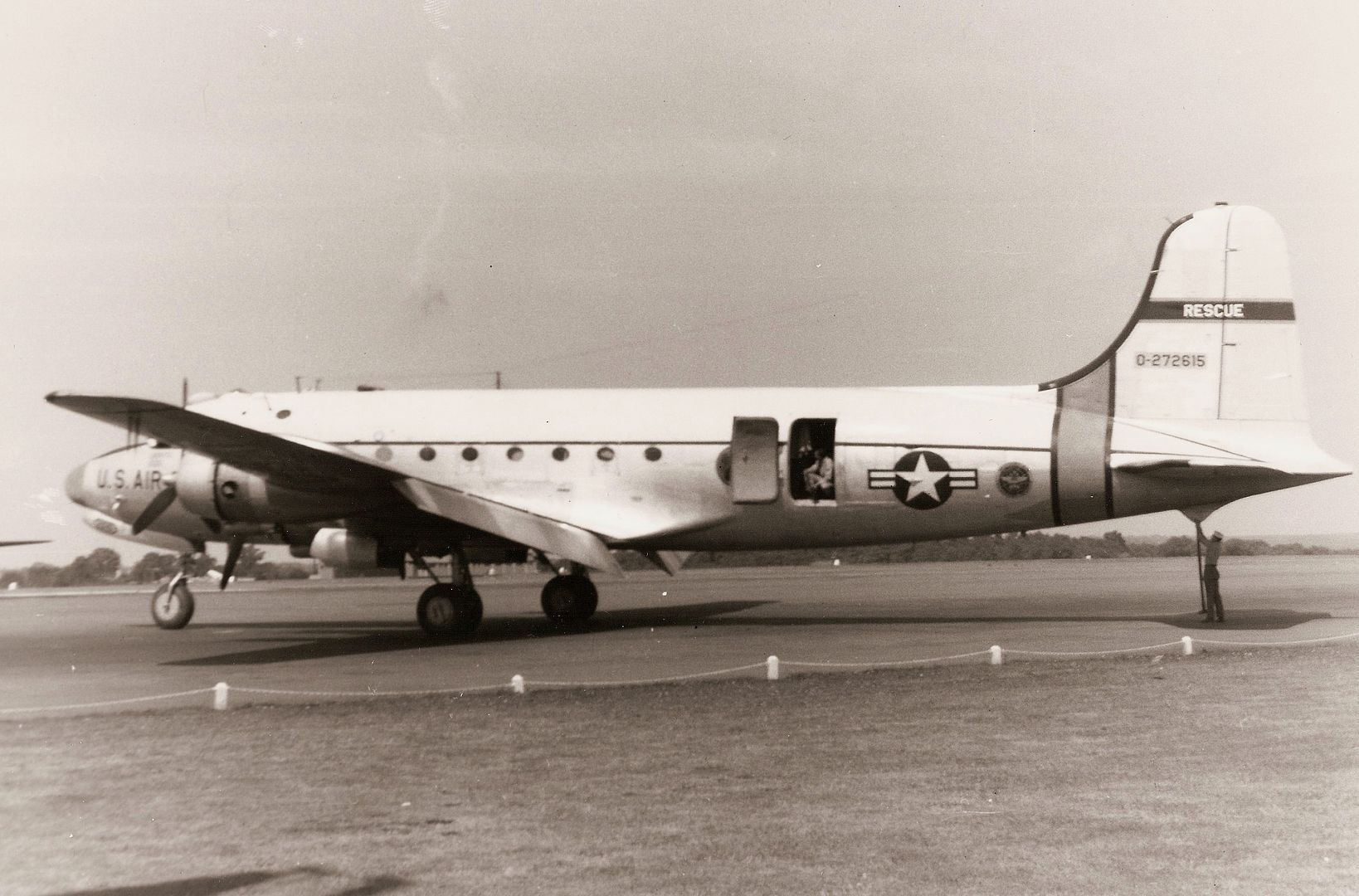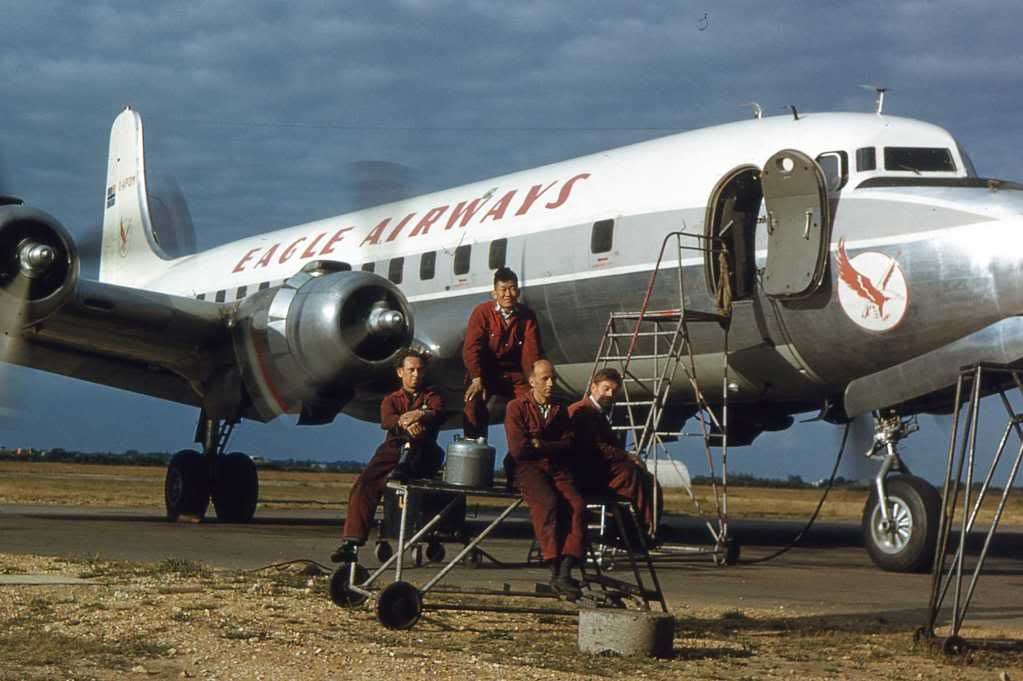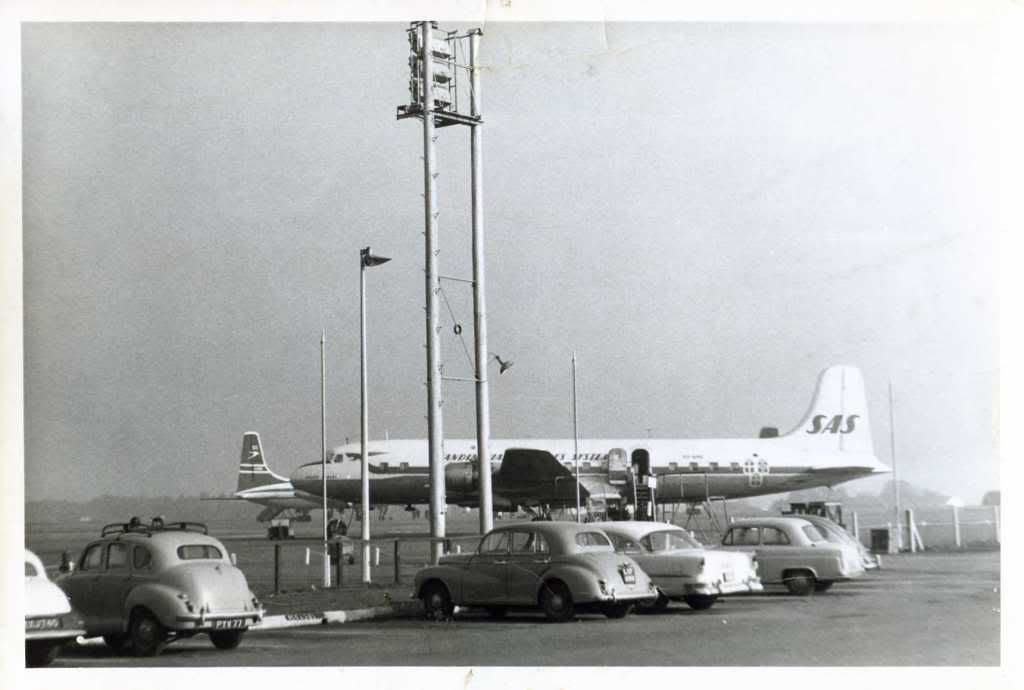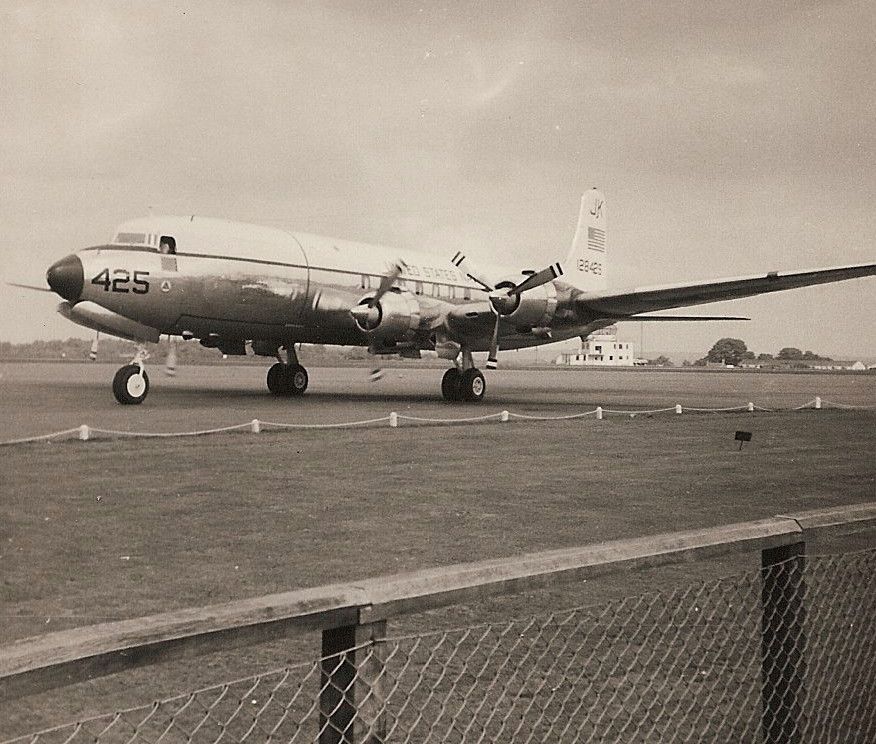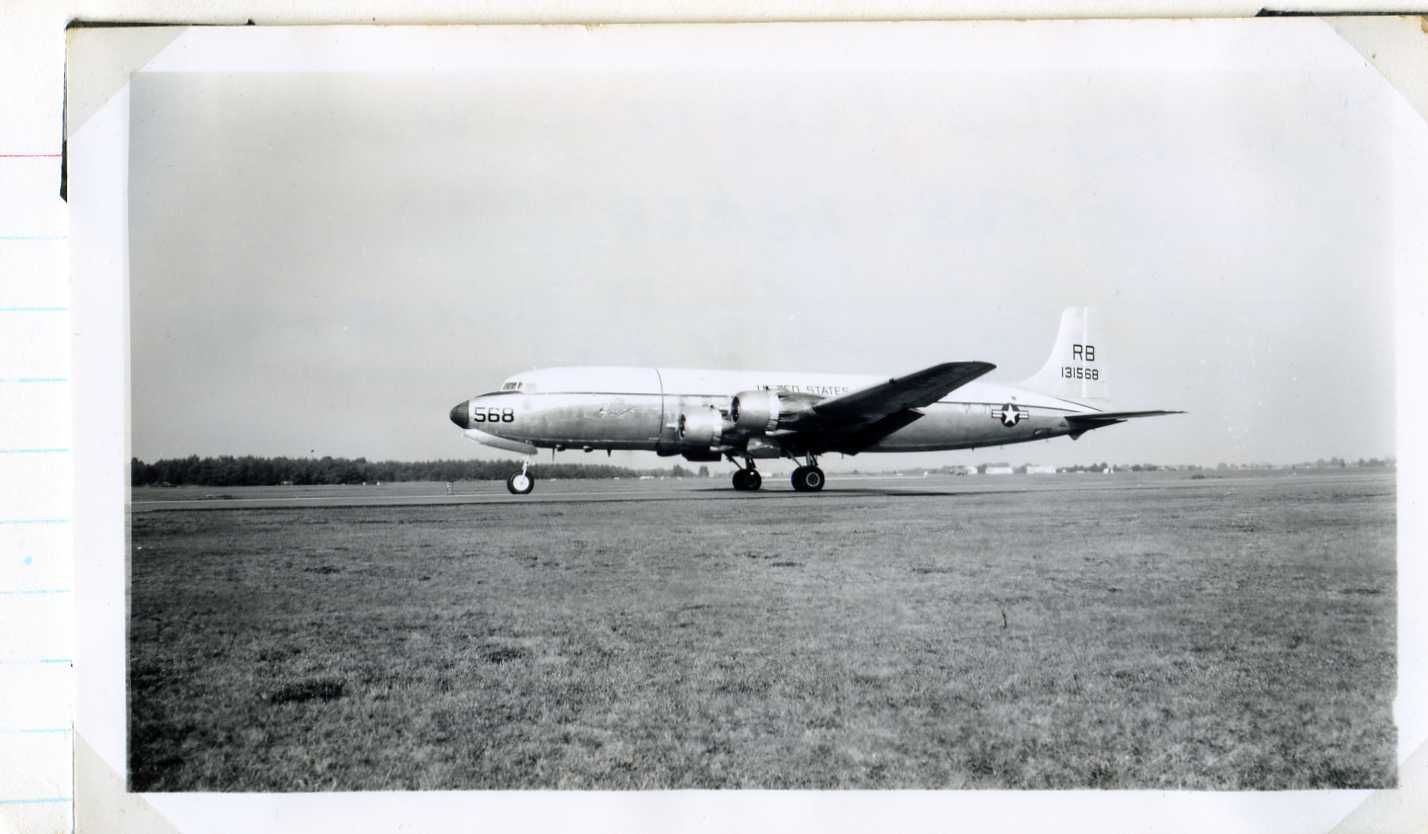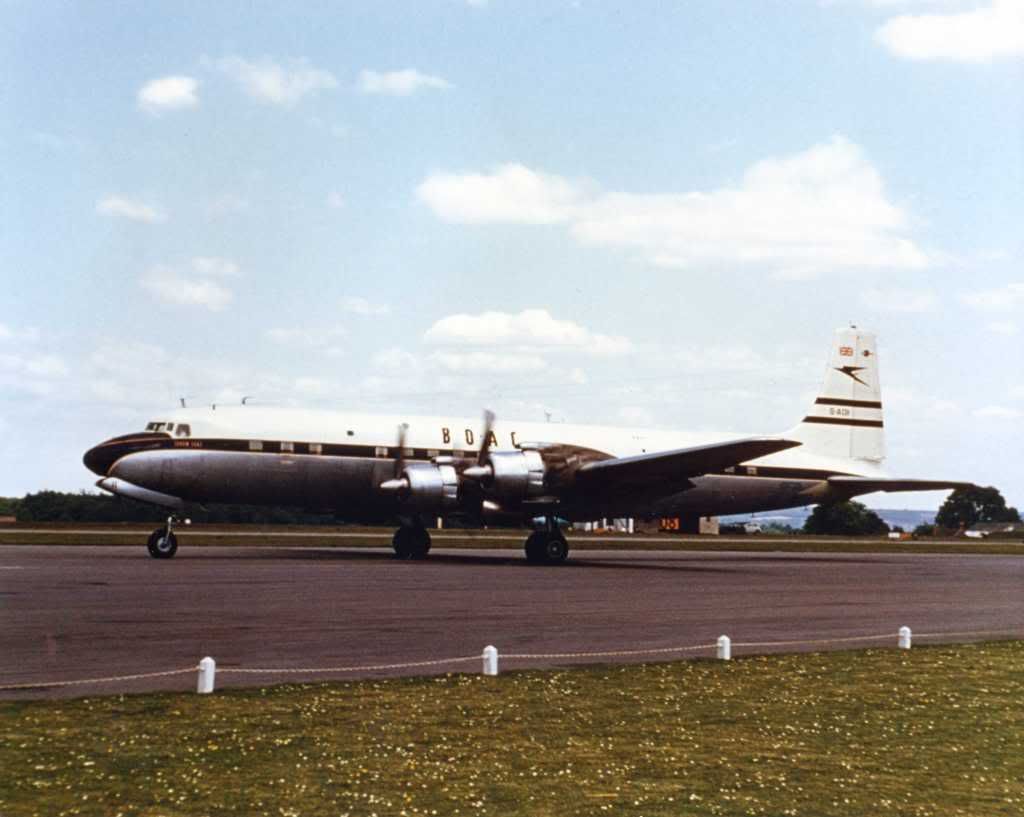Post by flyboy on Sept 26, 2016 11:16:06 GMT
The DOUGLAS Civilian DC4, Canadair C4, USAF C54 and US Navy WV variants.
Development.
The original designated DC4 was developed before World War II. This very large 42 seat aircraft with triple fins was designed for airlines such as Eastern, United, American Airlines and Pan Am as a DC3 replacement. However following the prototypes first flight the airlines considered it too large for their requirements and it never entered production. The DC4E ('E' for experimental) as it became known was therefore abandoned and a new smaller aircraft, confusingly also known as the DC4, was designed to meet the airlines requirements. Twenty four aircraft were initially put into production but these were commandeered by the Army Air Force and designated C-54 with a similar specification. The first aircraft 41-20137 flew for the first time on 26 March 1942 at Santa Monica powered by four 1350hp R2000-3 engines. Seating 26 passengers the military aircraft also carried 4x fuselage fuel tanks.
A C-54 production line was set up in Chicago where aircraft for the Air Transport Command (ATC) were produced. The Military Air Transport Service (MATS) came into existence on June 1st 1948 when 234 of the ATC aircraft were re-allocated to them. Around the same time four US Navy squadrons received other similar aircraft which were designated R5D.
MATS aircraft flew on the Berlin Airlift where eight squadrons with 319 aircraft were used on operations. Thirty eight aircraft were modified as C-54M's specifically to carry coal and food supplies. Large numbers of the C-54 were also deployed in support of the Korean war effort.
Thirty eight of the 'D' models were modified for use by the Air Rescue Service as the SC-54D, while a number
became the VC-54C, D and G staff and VIP transport models. Other variants included the AC-54D used by the MATS Airways and Air Communications Service, the JC-54 used by the 6560th Operations Group (Range Support) tasked with the recovery of missile nose cones and the TC-54D which was modified as a training aircraft variant.
The DC-4 line of aircraft with it's military counterparts was therefore used for a variety of purposes including as a VVIP transport for President Trueman who used USAF C54C 42-107451.
A modified aircraft 42-72461 of the All Weather Flying Centre was flown from Newfoundland to England automatically with the controls untouched by the check pilots from take off to touch down. Quite a feat in those days.
Of the total 1245 civil and military versions produced only 80 were delivered for civilian use, including 79 built post war.The rest were delivered as military variants, many of which passed into civil operators hands when retired from military duties.
The DC4 & Variants + DC6 +DC7.
BASIC SPECIFICATIONS
DC-4,C54,R5D. DC6B,C118,R6D. DC7C
Crew Three/Four Three/Four Seven
Passengers 40 - 80 42-89 105
Length 93' 10" (28.6m) 105' 7" (32.18m) 112' 3" (34.21M)
Wingspan 117' 6" (35.8m) 117' 6" (35.18m) 127' 6" (38.86M)
Height 27' 6" (8.38m) 28' 5" (8.66m) 31' 10" (9.70M)
Weight Empty 43,300lb (19,640 kg) 55,357lb (25,110 kg) 72,763lb (33,005kg)
Weight Full 63,500lb (28,800 kg) ----------?---------- ---------?-----------
Weight Max. take-off 73,000lb (33,100 kg) 107,000lb (49,000kg) 143,000lb (64,864kg)
Engines 4x Pratt & Whitney -> 4x Pratt & Whitney -> 4x Wright R3350 ->
R 2000 radials -> R2000 - CA15s ->. radial pistons
1450hp (1,081 kW) each 2400hp (1800 kW) each 3400hp (2536 kW) each.
Speed Max. 280mph (450km/hr) ----------?---------- 406mph (653km/h)
Speed Cruise 227mph (365km/hr) 315mph (507km/hr) 359mph (578km/h)
Range 4,250mi (6,839km) 4100mi (7600 km) 5600mi (9012 km)
Ceiling 22,300ft (6,800m) 25000ft (7600m) 28,400ft (8656m).
More Follows.........

